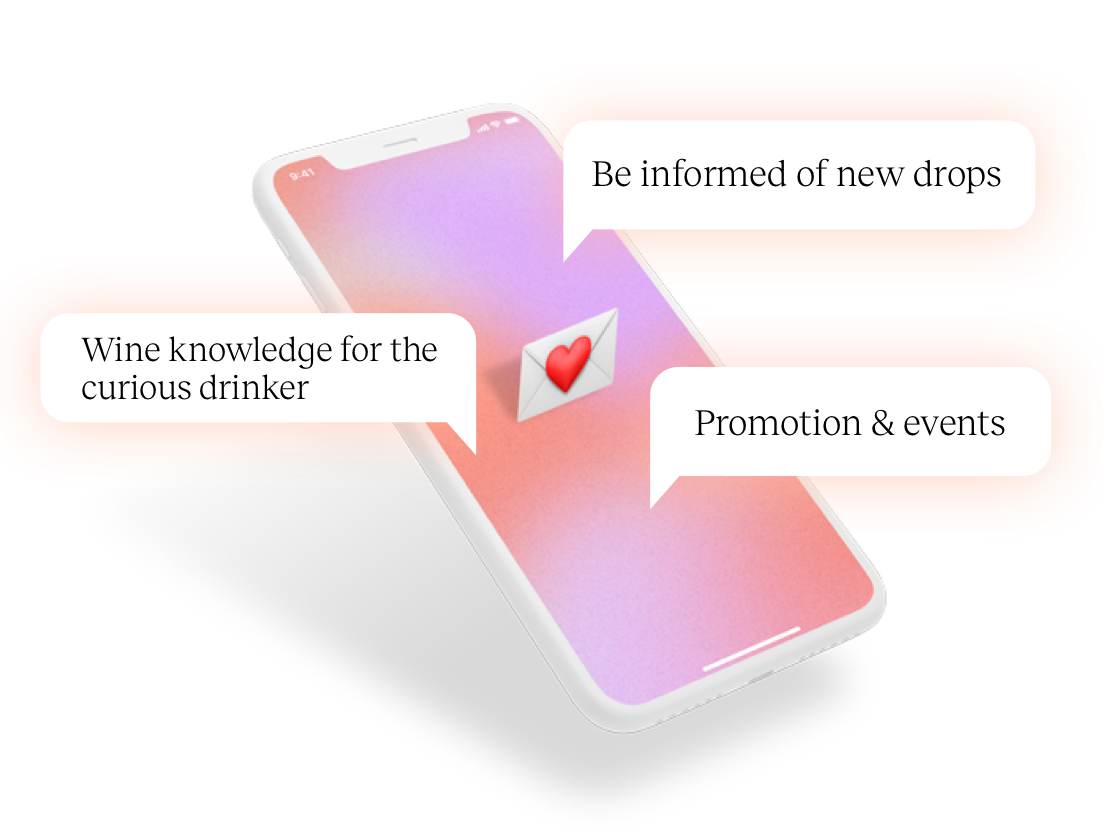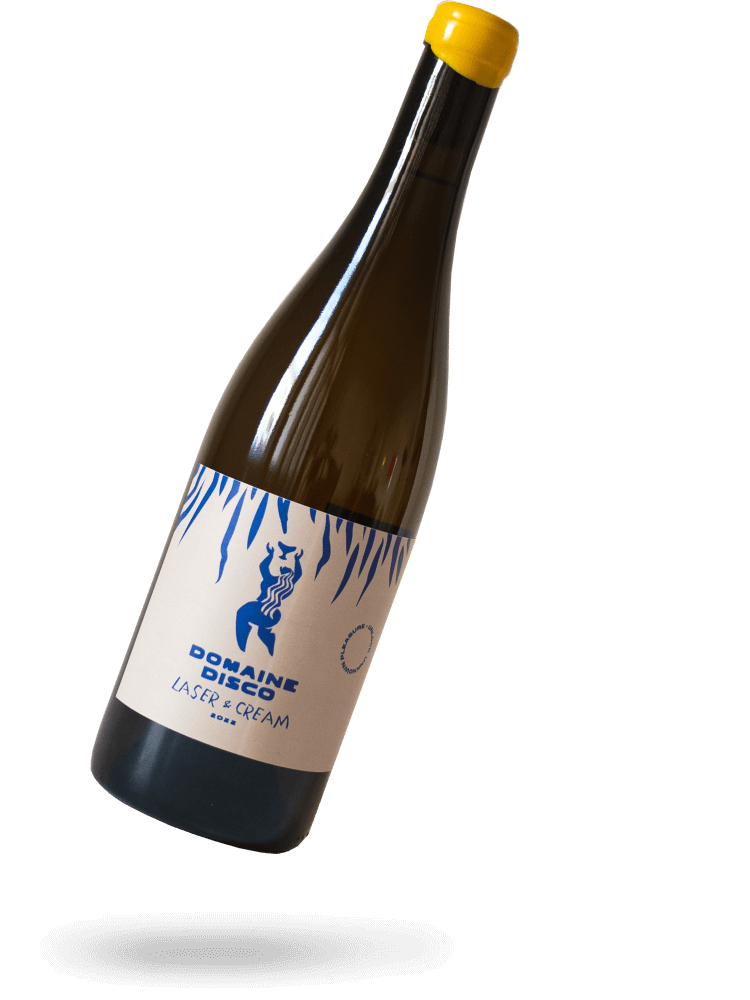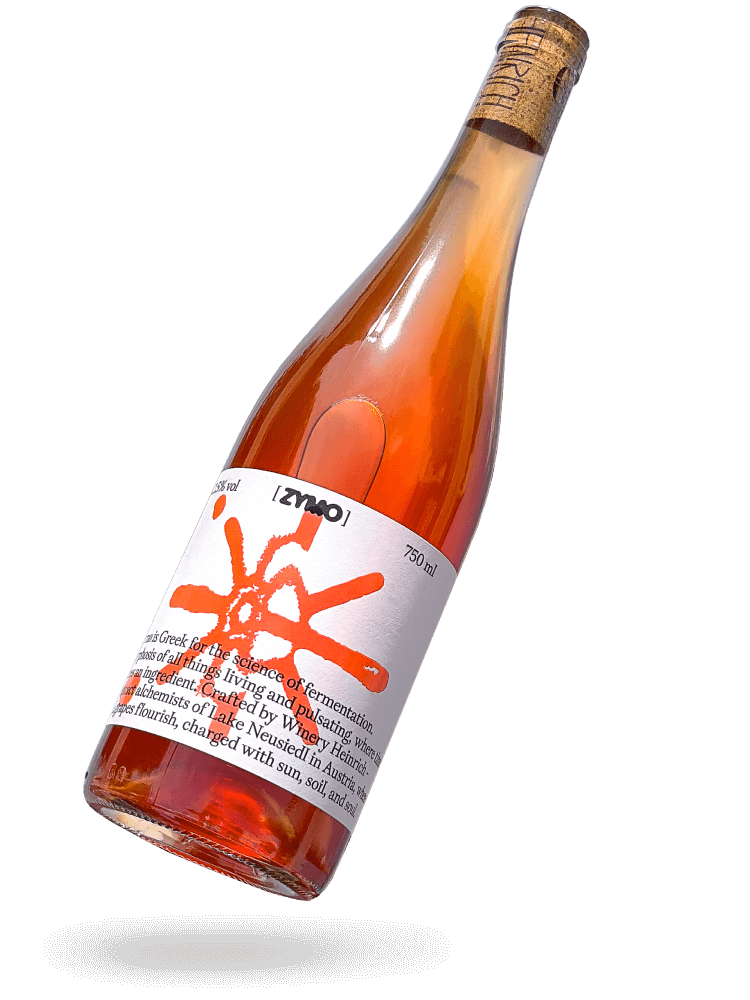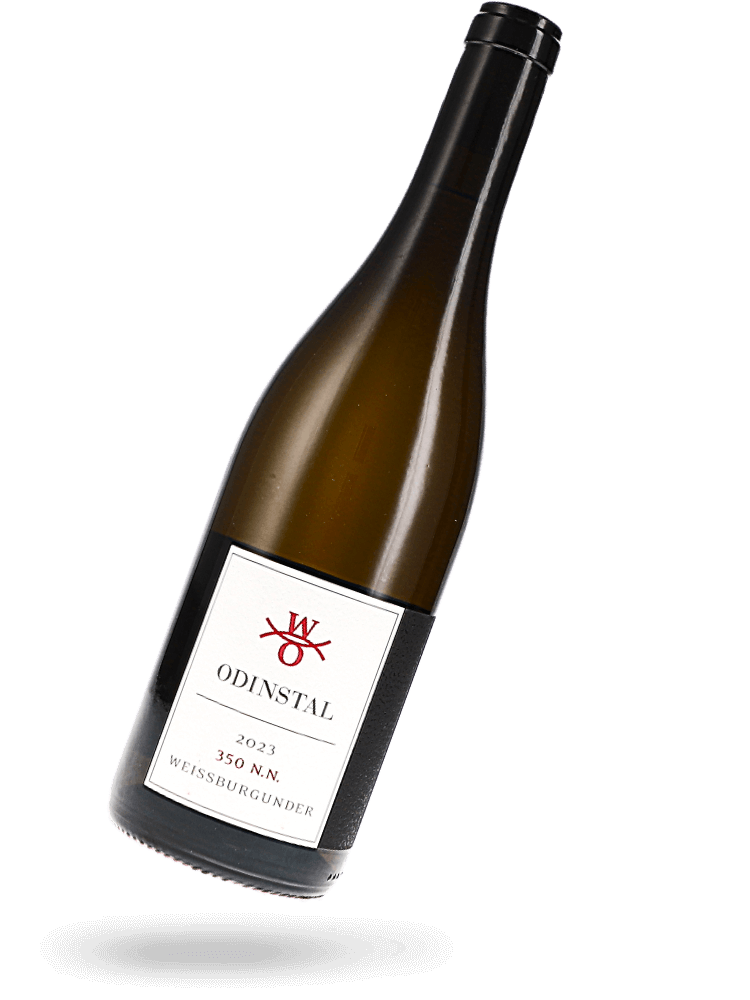Wine types
Harvested, racked and pressed: White wine is fermented grape juice from white grapes.
Red wine is fermented grape juice from grapes with red skin. Due to the contact of the skins in the fermentation process, color and tannins are released, which give the wine a certain DNA. Fruit and tannin thus form an unbeatable team and give the wine its silky texture.
They get their name from their light red to pink color, the special thing about them is their production: the skin of the red wine grapes remains only briefly on the mash during fermentation. This gives the wine the pink color and a grippier texture due to the tannins that enter the wine from the skins.
Orange wines are white wines made like red wines. The difference is that the skins of the grapes remain in the mash after pressing - for different lengths of time depending on the style. The skins provide the golden orange and give the wine a grippier texture due to contained tannins.
Natural wineexplained briefly: "Nothing added, nothing removed". More precisely, this means the following:
- from organic or biodynamic viticulture
-. grown without any pesticides
-. free from any additives
- produced without (or with very little) addition of sulphites
-. Bottled without fine filtration
Petillant Naturel is an artisan sparkling wine, which is also called method Ancestral. Compared to traditional sparkling wine production the mash which is still about to ferment, is poured directly into the bottle and corked - natural carbon dioxide is created.
Grape varities
Riesling has its origins in the Rhine valley, where it was first mentioned in documents in the 15th century. The origin of the grape variety is based on a cross between the Traminer grape cultivated by the Romans on the Rhine and the local Rhenish wild vine called Heunisch. The great triumphant march to the crown of German viticulture took place in the 18th and 19th centuries and was so sought after internationally that it was often more expensive than many great wines from France. Riesling develops an enormous amount of fruit, extract and acidity, with typical aromas of apricot, peach and apple. In addition, its minerality often reflects the complexity of its origin, which leads to its incredible desirability among sommeliers and wine lovers all over the world. From good years, noble sweet Riesling is almost immortal, but dry growths also ripen excellently. Riesling plays undisputedly in the Champions League of the wine world.
In blind tasting, the Sauvignon Blanc is usually quickly identified as a true aromatic bouquet in the glass. Typical aromas are fresh green grass and redcurrant and gooseberry. But it is not only loud and expressive: in France and Styria, very fine, subtle products with very good ageing potential are produced. The hype about Sauvignon Blanc began in the 90s in New Zealand, when the Cloudy Bay winery literally reinvented the grape variety. The exotic started a worldwide triumphal procession and was simply copied stylistically by many wineries. Sauvignon is often loud and aromatic, but in Styria or France it can also be incredibly mineral, complex and fine. You can like the former, but you don't have to. Sauvignon Blanc is extremely versatile and, with reduced yields, also presents itself as elegantly as Riesling or Pinot Noir. In the vineyards of Sancerre, Pouilly-Fumé and Touraine in the Loire, Sauvignon usually dominates the vineyards and produces astonishing qualities. Whether long on the mash as Orange Wine or aged in barriques, Sauvignon Blanc is a jack-of-all-trades and a very popular grape variety among gourmets worldwide.
Originally, Chardonnay is a natural cross between Heunisch and Pinot and grows in almost any climate and soil. From Burgundy in France, the grape variety has conquered the world and now grows in almost every country where wine is produced. The development in the cellar is just as versatile and versatile, from simple table wines to heavy, complex top qualities, everything is possible. Maturation in barriques has become almost obligatory, resulting in further aromas ranging from lightly roasted hazelnuts or almonds to vanilla and other smoky notes. In Burgundy or Chablis, it delivers the best results on chalky or chalky soils, which have an excellent reputation worldwide. In Champagne, it is a component of classic cuvées and serves as a single-varietal basis for Blanc de Blancs.
It often produces the best of both worlds: the grape variety has an intense, spicy bouquet and displays an aromatic freshness on the palate. No wonder, then, that Spritzer has legendary status at the Heuriger. In the glass we find fruit aromas such as apple, peach, citrus and some white pepper. A DNA study of Grüner Veltliner has shown that the grape variety's parents are Traminer and the almost forgotten old variety St. Georgen, of which, by the way, only one vine, over 400 years old, still exists. In Austria, Grüner Veltliner occupies almost a third of the total vineyard area and is particularly widespread in Lower Austria and northern Burgenland. Veltliner is very similar to Riesling and also impresses with fresh fruit aromas such as apple, peach and citrus. Under conventional cultivation, the grape variety delivers high yields, the vintner sees it with pleasure and thus produces wines for the Heuriger. With strictly reduced yields in first-class sites, however, the grape variety yields complex, highly ripe Prädikat wines with remarkable ageing potential and thus perfectly joins the qualities of a Riesling.
Blaufränkisch is Austria's most widespread red wine grape variety and is enjoying increasing international popularity. Characteristic aromas are deep forest berries and cherry. Often impetuous and cheeky when young, Blaufränkisch can nevertheless produce powerful wines with versatile facets when yields are reduced and sites are favourable.
Welschriesling is a white wine grape variety widely grown in Austria, which is almost experiencing a renaissance among young winemakers, with new, radical ideas. Typical characteristics of "Welsch", as it is called in this country, are a crisp, racy acidity and citrus aromas such as lime, grapefruit and a little gooseberry.
Muscat is the variety with the highest quality of the more than 200 different species of Muscat and is one of the oldest, most culturally influential wine varieties in the world. It has a beguiling, flowery bouquet and presents itself as yellow-green in the glass. Since the grape variety belongs to the aroma varieties, it does not go well with every meal, but is nevertheless wonderful to enjoy as an aperitif.
The Pinot Blanc enjoys the status of "easy-going" among winegrowers, because under certain conditions it delivers officially: consistently good yields and high must weights. Its wines are pale to light yellow and other typical aromas are pear, quince, melon and apricot.
Silvaner is considered one of the most important grape varieties for German white wine and experiences great popularity in Rheinhessen and Franconia. The wine has a rather mild acidity compared to Riesling and reminds one of herbs, gooseberry or fresh hay on the nose.
Scented, opulent, with a lot of body and little acidity. The Pinot Gris comes in a mostly lush guise and is the country star among the grape varieties. Aromas of apple, quince and yellow fruits dominate, with nutty aromas and a mass-appealing breadth added in barrique ageing.
Müller-Thurgau is a German white wine grape variety that is popular because of its harmonious characteristics. With its mild acidity and finely fruity muscat aroma, it produces very harmonious, accessible wines that go well with delicately aromatic dishes.
The Chenin Blanc has probably been at home on the Loire for thousands of years. It delivers from bone dry to noble sweet and produces aromas ranging from pear and quince to acacia blossom or beeswax. In hotter regions, nutty tones with melon and marzipan are often added.
Merlot is a small velvety fruit bomb. We find typical aromas like black cherry, plum, cassis and in warmer regions also liquorice and clove. The grape variety is closely related to Cabernet Sauvignon but still completely different. Together they form the dream team for high-class cuvées in Bordeaux. Merlot has a very good ageing potential, whereby the fruit then recedes somewhat into the background and makes room for herbal notes.
No other grape demands so many requirements for cultivation and ageing - a true diva. If these demands are met, it rewards with immense class and elegance. We find fine, subtle aromas such as red berries, cherry and blackcurrants, but also floral tones.
Originating in the area between Lake Geneva and the Rhone Valley, Syrah is closely related to Pinot Noir and also proves its status as a noble grape. Under optimal conditions, Syrah produces deep, colour-intensive red wines with smooth tannins. In the glass, we find typical aromas such as plum, leather, chocolate and a little pepper.
Pure fruit: the grape variety impresses on the palate with a rich portion of cherries, blackberries and blueberries. Due to its high alcohol content and few tannins, it is often blended with Tempranillo and Syrah in cuvèes.
Zweigelt is a cross between St. Laurent and Blaufränkisch, named after Professor Fritz Zweigelt, who bred the grape variety in the 1920s. The spectrum of Zweigelt ranges from wines to be drunk young to powerful growths with barrel ageing. Equipped with a pronounced tannin structure, Zweigelt delivers other aromas such as sour cherry, plum and vanilla.
Cabernet Sauvignon is one of the most important grape varieties on the planet. With its small berries, many seeds and firm skins, the grape variety delivers an intense bluish colour and strong tannins. The primary fruit aroma is blackcurrant, with other aromas such as plum, liquorice, leather and black cherry coming in with a little maturity.
Alvarinho is one of the most exciting grape varieties from the Iberian Peninsula, whose style is very similar to the German Riesling. It likes to be peppery and fresh with green notes and brings a good amount of peach and quince to the tachometer. When it comes to ageing, the Albariño is also versatile; it is an all-rounder and works with almost every type of ageing.
Nerello Mascalese grows mainly on the slopes of Mount Etna in Sicily and is often compared to Pinot Noir because of its flavour profile. In the glass, we find a strong fruity aroma of red berry fruits, some flowers and spicy notes like vanilla and tobacco. Furthermore, the volcanic rock on Mount Etna lends an almost unmistakable character.
Old-established but highly interesting. The grape variety gets its name from the delicate aroma of roasted hazelnuts and is nowadays grown exclusively in the Trentino area.
One of the most exciting grape varieties in northern Italy, perhaps also because it is a cross between Riesling and Pinot Blanc and conjures up aromas such as jasmine, lemon herb and honey in the glass.
With conventional ageing, this grape variety has a strangely neutral, very fresh character. However, if you give it time and a longer ageing on the lees, it really delivers and is really fun on the palate. Drinking fluency guaranteed.
It has recently been making a small comeback among expert winemakers. The Carignan's deep dark, almost black-purple colour also already suggests the aromas: spicy berries, plums, sour cherries and a little eucalyptus and coffee.
One of the oldest, genetically unaltered grape varieties in the world with delicately fragrant nutmeg and rose aromas. With warmth and lots of sun, the small, raisin-like grapes bring a lot of fun into the glass and convince with exotic fruits.
The grape variety impresses with its deep red, almost violet colour and is considered very harmonious with fine acidity and velvety tannin structure. Aromatically, we find forest fruits, elderberries, sour cherries and also some bitter chocolate.
Rich and intense in aroma and flavour, the grape is reminiscent of raspberries, blackcurrants, strawberries, violets and also has hints of paprika and green pepper.
Terms
Like a basket of fresh fruits: From citrus to peach, apple, pear, to cherry, raspberry or plum.
Like a fragrant flower meadow with notes like rose and jasmine blossoms and delicate meadow herbs.
Like the idea of a wet stone: sometimes cool, salty, slightly smoky and mostly a tight, grippy texture on the palate. More of a mouthfeel than an aroma.
Like invigorating herbs, grasses, hay through camomile to notes of essential oils.
Like an embrace of stronger, warmer aromas from pepper to coriander, cloves, vanilla to tobacco and leather.
Like a forest floor bursting with energy, with aromas of mushrooms, moss, root vegetables but also dried fruit aromas.
Tannins are present in the skin and stems of a grape. Mostly identified as bitter notes.
Wines far away from convention. They have a challenging personality and, due to their purist style, reveal complex and sometimes unruly aromas. From herbal to lactic, wild wines possess an enormous range of aromas. For experienced natural wine drinkers and curious minds.
Whether oxidative (with air contact) or reductive (no contact with CO2) ageing, these are wines with a twist that are somewhat out of the norm. They have an atypical taste, can be cloudy and also have a different colour (e.g. orange).
Clear, radiant natural wines with a rather classic aroma profile.
























